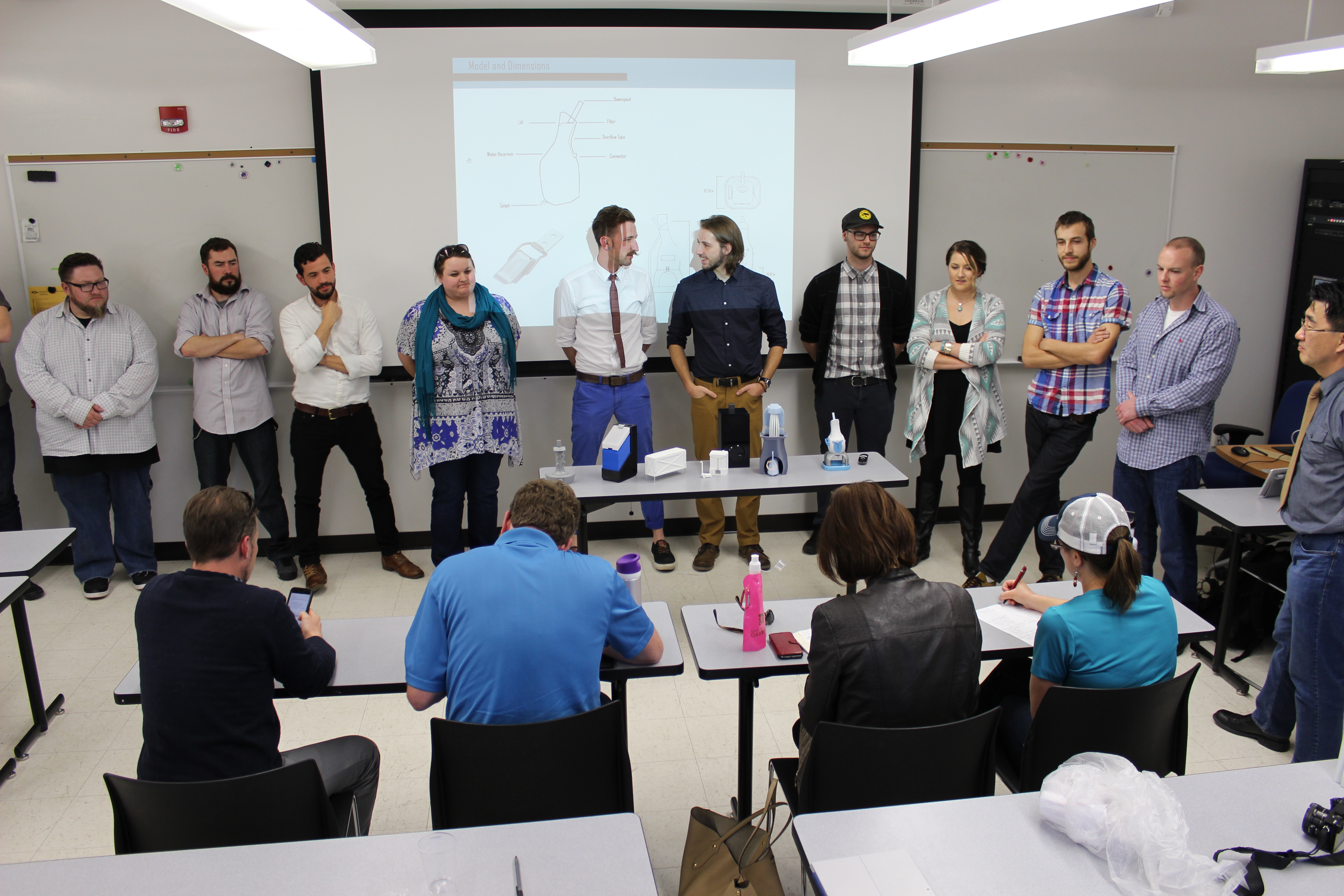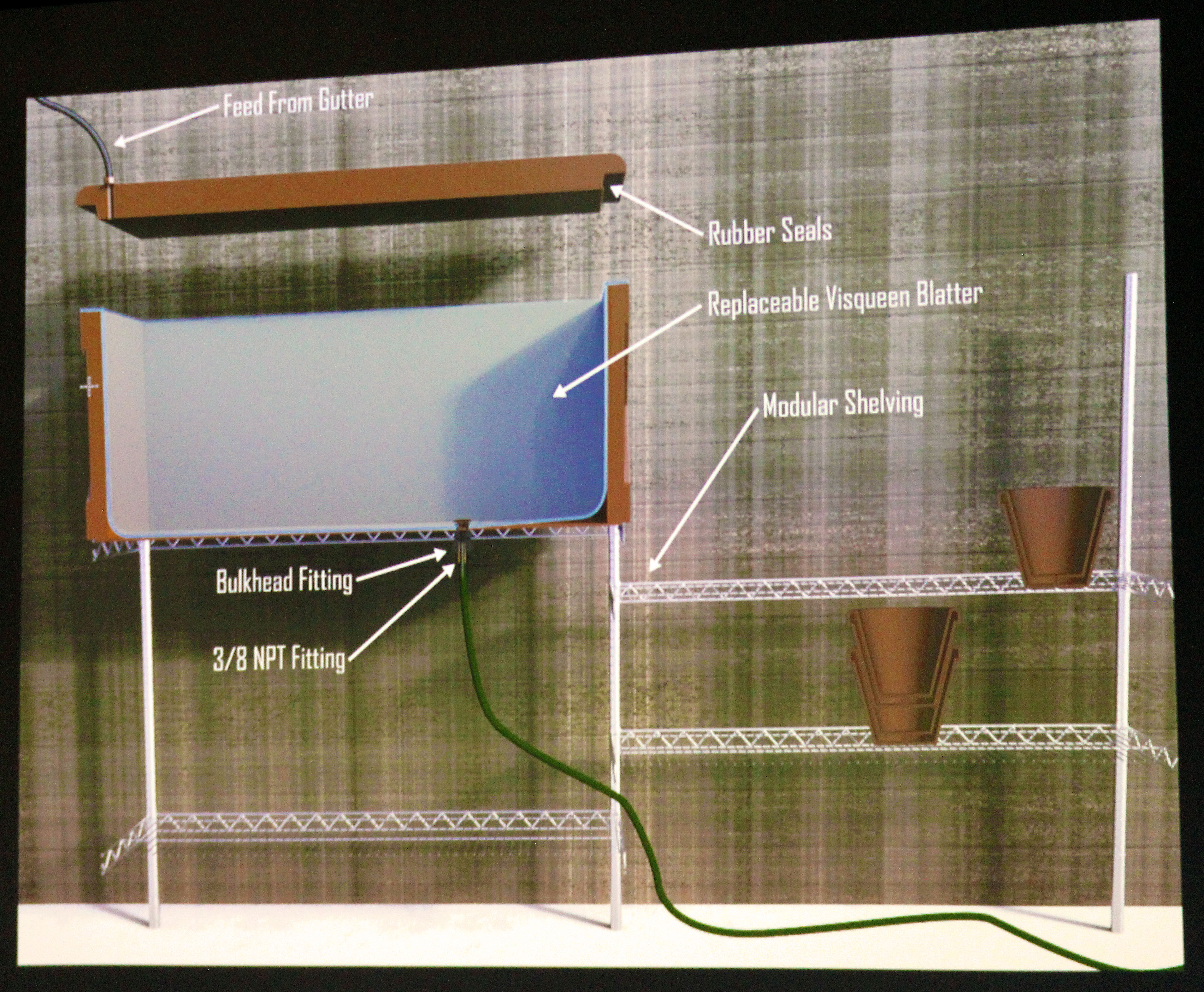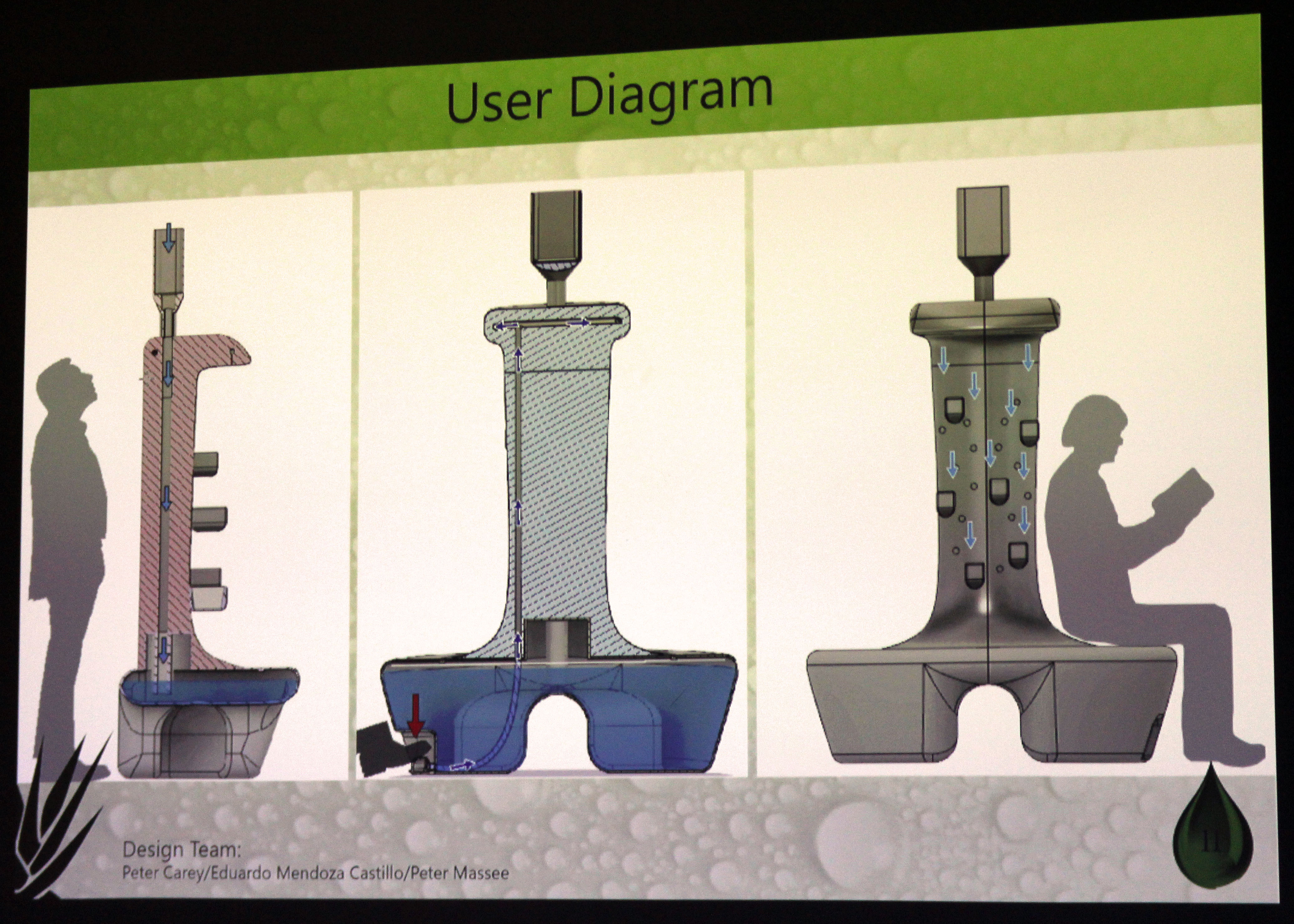
A sneak peek at rain barrels of the future
Every organization has a graveyard of brilliant ideas that have been tossed aside because they were considered too risky, too expensive, or just too hard to pull off. But it’s amazing what humans are capable of when we approach a problem from a space of possibility, rather than being locked into conventional experience.
I experienced just that when I sat in on an Intermediate Industrial Design Studio class at Metropolitan State University of Denver. Professor Ted Shin tasked the students with reimagining the rain barrel to improve how people experience water collection in their own yards.
I felt like a visitor in Tomorrowland.
The students presented seven new, innovative designs to a panel of industry expert judges. Each design was unique and incorporated different variables, like mobility, functionality, aesthetics, water quality, ease of maintenance, use of sustainable materials and even how it might engage a child’s curiosity to learn about water.
“I was surprised that most of the barrels were not shaped like barrels,” said Brandi Honeycutt, Denver Water community relations specialist and panel judge.
In fact, the overall winning design, Wendy Hughes and Ezra Depree’s Aqua Box, was not a barrel at all. It was a box.
Rain barrels have become a hot commodity since they recently became legal in Colorado. Honeycutt oversaw the program offering discounted barrels Denver Water provided in partnership with the Center for ReSource Conservation. The barrels sold out within weeks.
“In an era when so many of our commercial products are single-use throwaways, having the next generation of industrial designers focus their attention on a sustainable product that a customer may only buy once is a game-changer,” said judge Matt Bond, Denver Water’s manager of Youth Education and fellow panel judge. “We encouraged the students to bring their designs into the marketplace, where they can impact how our customers collect and use rainwater.”
In addition to the Aqua Box, awards went to the Myst garden bench design for best aesthetic value, and the Electric Rain Tank, with its electric water pump, for best functionality. The three winning designs will be on display this June at the Watershed Conference at Denver Botanic Gardens.



